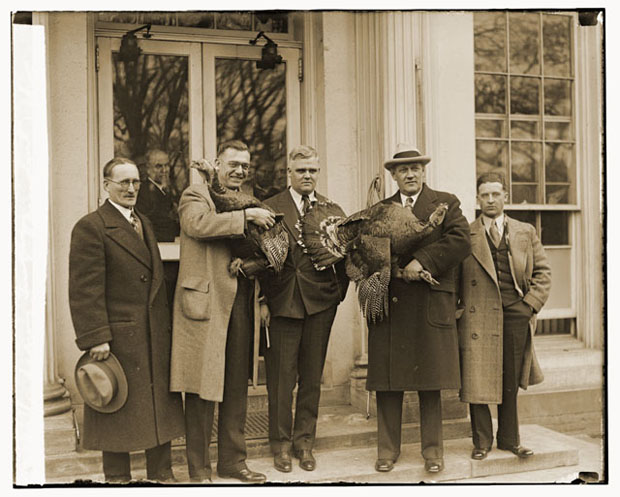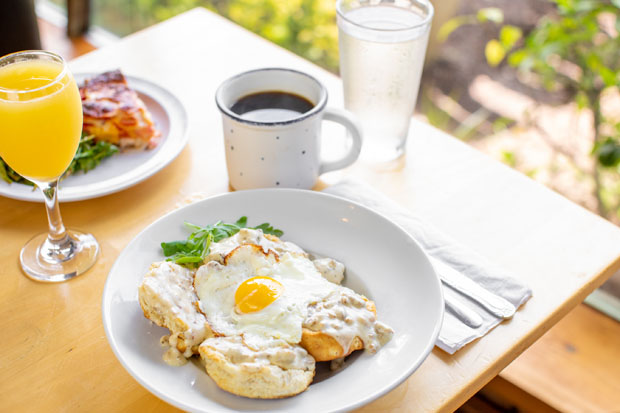Talking Turkey
03 Nov 2022
How the respectable gobbler arrived on our holiday tables
By Tim Lowry

This time of year, with the Thanksgiving holiday and all, we tend to pause and ponder—at least for a moment—where our food comes from. In this age of instant everything, it is good to remember that we couldn’t always just heft a fully plucked and prepped turkey from the freezer section of the grocery store with stuffing and baking instructions conveniently printed on the plastic packaging. There was a time when having a beautifully-baked bird with trimmings required the efforts of several people, not the least of which was the hunter.
Undoubtedly, native coastal tribes were hunting bear, deer, boar, rabbit and squirrel before Europeans settled the Colony of Carolina; but turkeys are specifically mentioned by Dr. Henry Woodward, the first English settler in South Carolina, as a staple of the local diet in field notes from the year 1674.
According to Encyclopedia Britannica, it is estimated that there were at least 10 million turkeys in America at the time of European settlement. In less than a generation, plantation owners oversaw the clearing of thousands of acres of woodlands and the draining of swamplands where wild game freely roamed and replaced much of the wild meat so common in those early years with domesticated beef, pork and poultry.
However, the meat from wild turkey fowl was still highly prized as the center piece on a banqueting table as a trophy representing the hunting prowess of sportsmen who enjoyed the challenge of bagging a particularly elusive bearded gobbler. Yes, there were domesticated turkeys in the barnyards of Lowcountry plantations, but they didn’t come with bragging rights.
By the late 1700’s, the wild turkey was well-known throughout the colonies as one of the most challenging game birds. With very keen eyesight, acute hearing, the ability to fly and also swim (believe it or not) the humble turkey proved a worthy adversary for any seasoned hunter. So much so that Benjamin Franklin sang the bird’s praises. In a letter to his daughter, Franklin expressed distaste for the eagle as a national symbol saying that the bird of prey was “of bad moral character.” He went on to say that the turkey by comparison was “a much more respectable bird, and withal a true Native of America”—further referring to the gobbler as a “Bird of Courage.”
Ben Franklin may have loved the turkey, but how it ended up on our Thanksgiving and Christmas dining tables rather than the Great Seal of the United States is more a matter of conjecture than clearly documented history.
Of course, the illustrations in children’s books, greeting cards and holiday advertisements would lead one to believe that turkey was the choice meat served at the “First Thanksgiving” in Plymouth, Massachusetts. However, the historic record states that venison, not turkey, was the meat shared between the pilgrims and the local Wampanoag tribe.
Some food historians point to British novelist Charles Dickens’ mention of a prize turkey in A Christmas Carol as the beginnings of a long-standing holiday tradition. However, Sarah Josepha Hale, editor of the highly-regarded Godey's Lady's Book magazine, gave the turkey a prominent position at the head of an American table when she described a New England Thanksgiving in lengthy detail in her 1827 novel Northwood. Her novel pre-dates Mr. Dickens’ book by 16 years.
Turkey comes to the White House
Hale actively campaigned to have a Day of Thanksgiving declared as a nationally recognized holiday. Her efforts were rewarded when President Abraham Lincoln signed into action “A National Day of Thanksgiving and Praise” in 1863. Also, about this time President Lincoln issued an unofficial “pardon” for a turkey that had been presented to him. The bird was a gift intended for the dinner table, but the president’s son Tad had adopted him as a feathered friend and Mr. Lincoln (a soft-hearted, war-time president) asked that the turkey be spared.
All of these factors probably worked together to help Americans associate the consumption of turkey with the holiday season. And even though Abraham Lincoln was the first president to publicly spare a turkey’s life, the official pardoning of a presidential turkey was not an established tradition until the George H.W. Bush Administration.
Before that time, Presidents Truman, Eisenhower, Kennedy, Johnson, Nixon, Ford and Reagan took photo opportunities with birds that had been presented to the White House by various poultry and agricultural lobbies. However, according to an article published by the National Constitution Center, “it’s not 100 percent known if any of the birds survived their White House tour— without being stuffed, dressed, and served on a platter.”
Of course, here in the South Carolina Lowcountry, come Thanksgiving and Christmas, the turkey shall not be spared. Whether he comes from domestic stock or the wild woods, the bird will be served up on a platter along with trimmings that have equally important histories. The rice could tell stories of the west coast of Africa, the “Three Sisters” (beans, corn, and squash) could sing songs from native peoples, the sugar sweetening the pies and cakes could speak of a Caribbean connection, and the Jell-O salad . . . well, that allows us to practice a long-standing Southern tradition. We just bump the edge of the platter with our hand as we reach for more pie and watch it jiggle as we say to our cousin from Off, “Did you bring that? Well, bless your heart!”
As we eat a little of everything this season, let us be thankful as we remember bygone days, the hard times, the good times, the old ways and the customs of generations that came before.
Storyteller Tim Lowry is a Southern raconteur from Summerville. Learn more at www.storytellertimlowry.com.












